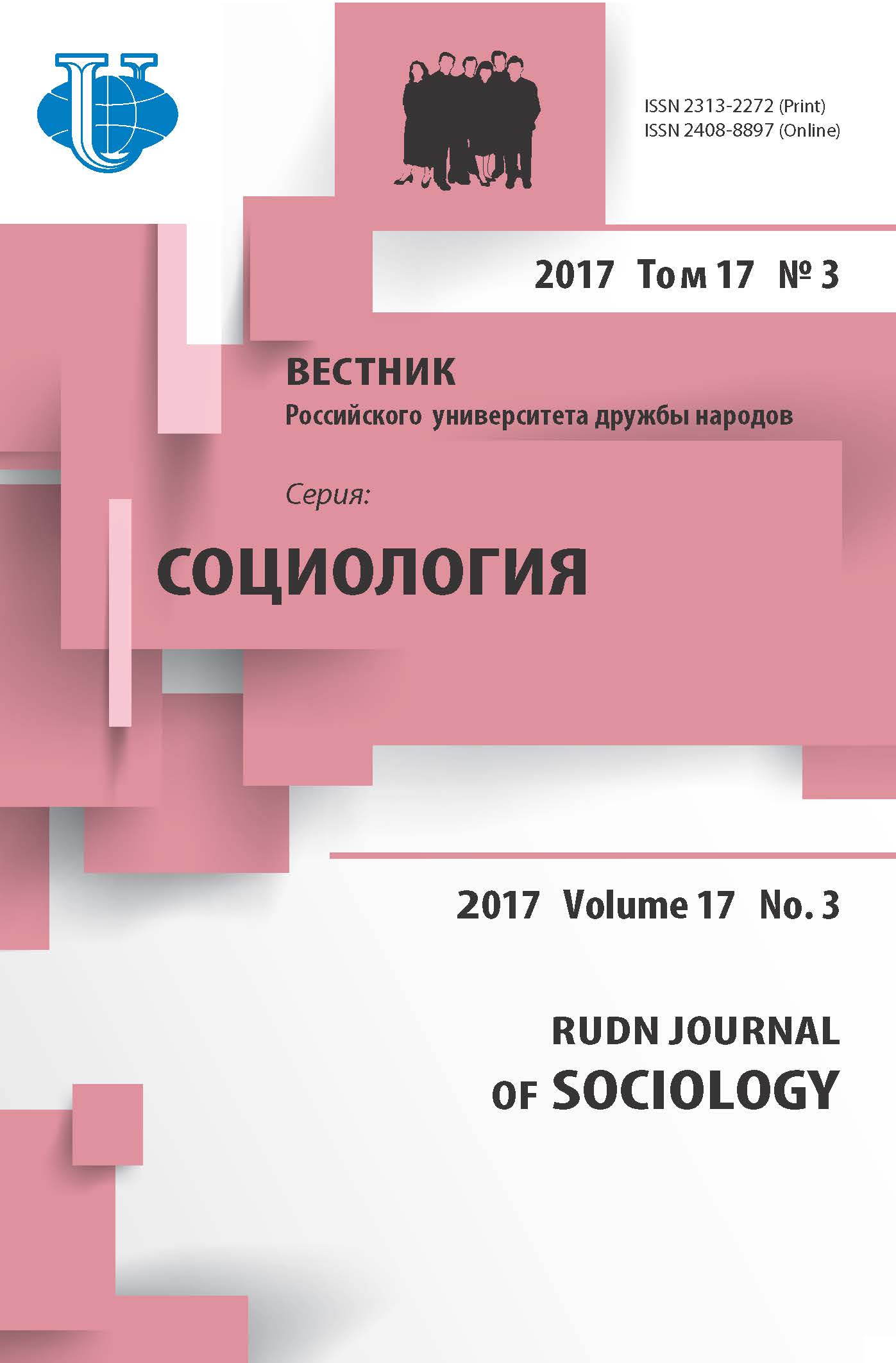AGRARIAN QUESTION AND ITS IMPACT ON THE DEVELOPMENT OF ETHIOPIA
- Authors: Kumsa A1
-
Affiliations:
- Charles University in Prague
- Issue: Vol 17, No 3 (2017)
- Pages: 299-305
- Section: Theory, Methodology and History of Sociological Research
- URL: https://journals.rudn.ru/sociology/article/view/16802
- DOI: https://doi.org/10.22363/2313-2272-2017-17-3-289-305
- ID: 16802
Cite item
Full Text
Abstract
Keywords
About the authors
A Kumsa
Charles University in Prague
Email: alemayehu.kumsa@fhs.cuni.cz
U Kříže 8, 15800 Praha 5, Czech Republic
References
- Abdi M.M. A History of the Ogaden (Western Somali) Struggle for Self-Determination. Lightning Source; 2007.
- Almond G.A., Powell B.G. (eds.). Comparative Politics. A World View. N.Y.: Harper Collins Publisher; 1992.
- Basic Documents of the Ethiopian Revolution. Negarit Gazeta. 29 April 1975.
- Brockway F. The Colonial Revolution. L.: Hart/Davis, MacGibbon; 1973.
- Bulatovich A. Ethiopia through Russian Eyes: Country in Transition 1896-1898. Lawrenceville & Asmara: Read Sea Press; 2000.
- Bulcha M. Flight and Integration: Causes of Mass Exodus from Ethiopia and Problems of Integration in the Sudan. Uppsala: Scandinavian Institute of African Studies; 1988.
- Bulcha M. The Making Oromo Diaspora: A Historical Sociology of Forced Migration. Minneapolis: Kirk House Publisher; 2002.
- Clapham C. Transformation and Continuity Revolutionary Ethiopia. Cambridge University; 1988.
- Colár A. Empire. Cambridge: Polity Press; 2007.
- Constitution of the Federal Democratic Republic of Ethiopia. 1995.
- Donham D., Wendy J. (eds.). The Southern Marches of Imperial Ethiopia: Essays in History and Social Anthropology. Cambridge University Press; 1986.
- Dudden A. Japan’s Colonization of Korea: Discourse and Power. Honolulu: University of Hawai’i Press; 2006.
- Etherington N. Theories of Imperialism: War, Conquest and Capital. L.: Croom Held; 1984.
- Fukuyama F. The Origins of Political Order: From Pre-Human Times to the French Revolution. L.: Profile Books; 2011.
- Gerbee T. The Geda militarism and the Oromo Expansion. Ethiopian Review. 1993; October.
- Haile G. Yeabba Bahriy Dirsetoch: Oromowochin kamimalaketu leloch sanadoch gara. Minnesota: Avon; 2002.
- Henze P.B. Layers of Time: A History of Ethiopia. L.: Hurst & Co; 2001.
- Honzák F., Pečenka M. Státy a jejich představitelé. Praha: Nakladatelství LiBri; 1998.
- Horowitz D.L. Ethnic Groups in Conflict. L.: University of California Press; 1985.
- Horvath R.J. A definition of colonialism. Current Anthropology. 1972;13(1).
- Hroch a kol. Encyklopedie D ějin Novověku 1492-1815. Praha: Nakladatelství LiBri; 2005.
- Huntingford G.W. B. The Galla of Ethiopia, The kingdom of Kaffa and Janjero. L.: International African Institute; 1955.
- Jalata A. Oromia and Ethiopia: State Formation and Ethno-national Conflict, 1868-1992. Boulder-L.: Lynne Reinner Publishers; 1993.
- Laitin D., Samatar S. Somalia: Nation in Search of a State. Boulder: West View Press; 1987.
- Lefort R. Ethiopia: An Heretic Revolution? L.: Zed Press; 1983.
- Legesse A. Gada: Three Approaches to the Study of African Society. N.Y.: Free Press; 1973.
- Lewis I.M. Peoples of the Horn of Africa: Somali, Afar and Saho. L.: James Currey; 1998.
- Markakis J. Anatomy of a Traditional Polity. Oxford University Press; 1974.
- Markakis J., Nega A. Class and Revolution in Ethiopia. Trenton: Read Sea Press; 1986.
- Melba G. Oromia: A Brief Introduction. Finfine; 1980.
- Melba G. Oromia: An Introduction. Khartoum; 1988.
- Menkhaus K. Somalia: A country in peril, a policy nightmare. 2008. http://www.enoughproject.org (assessed 27.5.2011).
- Oliver R., Atmore A. Africa since 1800. Cambridge University Press; 1967.
- Oppenheimer F. The State. Montréal: Black Rose Books; 1975.
- Osterhammel J. Colonialism: A Theoretical Overview. Princeton: Markus Wiener Publishers; 2010.
- Pankhur st R. Economic History of Ethiopia: 1800-1935. Addis Ababa: Haile Sellasie iUniversity Press; 1968.
- Perham M. The Government of Ethiopia. Evanston: North-West University Press; 1969.
- Plowden W.C. Travels in Abyssinia and the Galla Country. L.: Longmans; 1868.
- Rahmato D. Land to Investors: Large-Scale Land Transfer in Ethiopia. Addis Ababa: Forum for Social Studies; 2011.
- Shell-Shocked: Civilian under siege in Mogadishu. Human Rights Watch. 2007;19(12).
- “So Much to Fear”: War Crimes and the Devastation of Somalia. N.Y.: Human Right Watch; 2008.
- Tareke G. Ethiopia: Power and Protest: Peasant Revolts in the Twentieth Century. Cambridge University Press; 1991.
- Triulzi A. Competing views of national identity in Ethiopia. Lewis I.M. (dd.) Nationalism & Self Determination in the Horn of Africa. L.: Ithaca Press; 1983.
- Tronvoll K. Ethiopia’s 2010 elections: One party system. African Affairs. 2011;110(438).
- Ullendor ff E. The Ethiopians: An Introduction to the Country and People. Oxford University Press; 1960.
- Woldemariam B. The History of the Kingdom of Kaffa: The Birth Place of Coffee 1390-1935. Hwassa: Association for Research and Conservation of Culture, Indigenous knowledge and Cultural Landscape; 2010.
- Zewde B. A History of Modern Ethiopia 1855-1974. Addis Ababa University Press; 1991
Supplementary files













